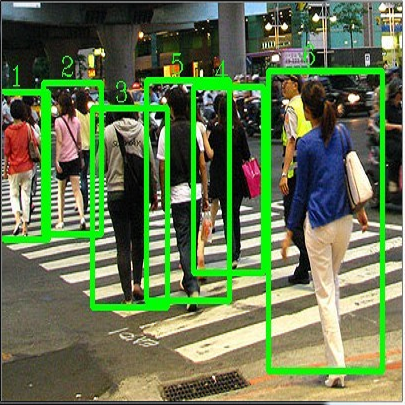
Over the last few decades, Lung Ultrasound (LUS) has been increasingly used to diagnose and monitor different lung diseases in neonates. It is a non invasive tool that allows a fast bedside examination while minimally handling the neonate. Acquiring a LUS scan is easy, but understanding the artifacts concerned with each respiratory disease is challenging. Mixed artifact patterns found in different respiratory diseases may limit LUS readability by the operator. While machine learning (ML), especially deep learning can assist in automated analysis, simply feeding the ultrasound images to an ML model for diagnosis is not enough to earn the trust of medical professionals. The algorithm should output LUS features that are familiar to the operator instead. Therefore, in this paper we present a unique approach for extracting seven meaningful LUS features that can be easily associated with a specific pathological lung condition: Normal pleura, irregular pleura, thick pleura, Alines, Coalescent B-lines, Separate B-lines and Consolidations. These artifacts can lead to early prediction of infants developing later respiratory distress symptoms. A single multi-class region proposal-based object detection model faster-RCNN (fRCNN) was trained on lower posterior lung ultrasound videos to detect these LUS features which are further linked to four common neonatal diseases. Our results show that fRCNN surpasses single stage models such as RetinaNet and can successfully detect the aforementioned LUS features with a mean average precision of 86.4%. Instead of a fully automatic diagnosis from images without any interpretability, detection of such LUS features leave the ultimate control of diagnosis to the clinician, which can result in a more trustworthy intelligent system.
翻译:在过去几十年里,肺超声(LUS)越来越多地被用于诊断和监测新生儿的不同肺病。这是一个非入侵性工具,可以进行快速床边检查,同时对新生儿进行最小处理。获得LUS扫描很容易,但了解与每种呼吸疾病有关的人工制品也很困难。在不同呼吸系统疾病中发现的混合人工制品模式可能会限制操作者对LUS的可读性。虽然机器学习(ML),特别是深层学习可以帮助自动分析,仅将超声图像装入ML诊断模型,不足以赢得医疗专业人员的信任。算法应该输出操作者熟悉的最终LUS特性。因此,在本文中,我们提出了一个独特的方法来提取7个有意义的LUS特征,这些特征很容易与特定的肺部疾病相关联:正常的脾脏、不正常的脾脏、厚的脾脏、阿林斯、煤白线、独立的B线和综合。这些工艺可以导致婴儿早期控制后呼吸压力症状。一个单一的多层的SLUS系统、更直径系统、更不为操作者所熟悉的LNRC的物体检测模型,可以在常规的RNRC中更快速地检测结果中,这些常规的RNRC的普通的模型可以更快速地显示。在RNRC的DNA中进行更快速的正常的模型中进行更精确的模型上进行更精确的测试。




